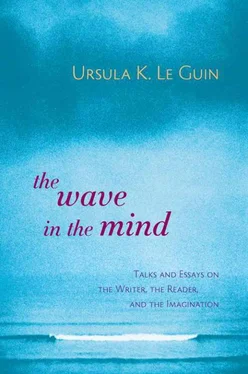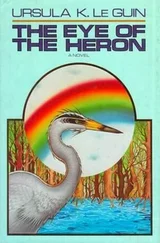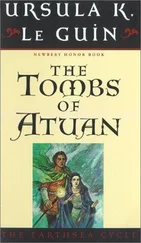Stresses: 38
Judson Jerome, in Poetry: Premeditated Art , a useful and interesting book, says that poetry averages 40 to 60 stresses per 100 syllables, while prose averages about 20 to 40. My samples of prose run higher than that. He says that the maximum number of nonstressed syllables between stresses in poetry, on average, is 0 to 2, while in prose it’s 2 to 4, while the maximum possible number of unstressed syllables in a row is 6 to 7. I’ve seldom found even four unstressed syllables in a row occurring in good prose.
Here’s my count of how our prose samples vary in the number of stressed syllables, and some other counts and comparisons, which I find fascinating and you may wish to sink deep in the Sea of Unread Statistics.
Per 100-syllable sample:
Number of stresses, most to fewest:
— “Three Bears,” Woolf: 48
— Tolkien: 47
— Twain: 44
— Stein: 38
— Darwin: 35
— Austen: 33
— Craig: 32
Number of words, most to fewest:
— Twain: 85.5
— “Three Bears:” 79
— Darwin: 77
— Stein: 76
— Woolf: 75
— Austen, Tolkien: 72
— Craig: 52.5
Number of sentences, most to fewest:
— Woolf: 6
— Twain, Tolkien: 4
— “Three Bears,” Craig: 3
— Stein: 2
— Darwin: 1
— Austen: 1
Number of bars, most to fewest:
— Woolf: 24
— Twain: 19
— Tolkien: 15
— “Three Bears,” Darwin: 13
— Craig, Austen, Stein: 10
Number of one-syllable words, most to fewest:
— Twain: 72
— “Three Bears”:62
— Stein: 59
— Darwin: 58
— Austen: 55
— Woolf: 53
— Tolkien: 45
— Craig: 25
Two-syllable words, most to fewest:
— Tolkien: 24
— Woolf: 19
— Darwin, “Three Bears,” Craig: 15
— Twain, Stein: 10
— Austen: 7
Three-syllable words, most to fewest:
— Austen: 10
— Craig: 9
— Stein: 7
— Woolf, Twain, “Three Bears”: 3
— Tolkien: 2
— Darwin: 1
Words over three syllables:
— “Three Bears,” Austen, Stein, Woolf, Twain, Tolkien: 0
— Darwin: 1 of four syllables
— Craig: 4, 2 of four syllables, 1 of five, 1 of seven.
Various interesting factoids emerge:
• that Virginia Woolf and “The Three Bears” have the same stress-count;
• that Mark Twain uses more one-syllable words than a folktale;
• that in even a readable textbook more than half the words are polysyllables;
• that Woolf writes the shortest sentences of the lot and Austen the longest;
• and so on.
The samples are far too small and the method of counting stresses too subjective for any conclusions at all to be drawn. That Jane Austen’s stress-count is almost the same as that of the textbook is, however, a good indication that merely counting stresses is not going to give us any solid indications of the quality—in all senses—of the prose.
None the less I found it an interesting and worthwhile exercise, the simple doing of which intensified and refined my awareness of the rhythms of prose. [1] I want to thank Dell Hymes for giving me the whole idea of reading prose this way—though of course he bears no responsibility for my extensions and misuses. His work with the written version of oral narrative is stunning in its revelation of complex, conscious, formal pattern in Native American narratives long considered “artless,” “primitive,” etc.
BEYOND STRESS
Long Prose Rhythms
Stress-units are the smallest elements of prose rhythm, and the most purely physical. The frequency of stressed syllables and the handling of the beat so that it’s neither jerky nor monotonous are essential elements of the character of the prose sentence.
Thus the sentence itself, as I tried to show in my analyses of passages above, is a rhythmic but never regularly rhythmic element of prose.
Other elements of prose rhythm are vastly longer and larger, and far more elusive.
Rhythm is repetition. In a prose narrative, which must “move” with the events it tells, what can be repeated without losing the narrative impulse? What events can recur (of course with variations) to form the long rhythmic patterns of narrative?
Recurrent events in a narrative have to do with sound (the words, phrases, sentences) and they have to do with meaning (the content of the words—images, described actions, moods, themes).
There is repetition, much more repetition, even in very sophisticated narrative, than one might expect.
Repetition of Words or Phrases
Virginia Woolf’s novel Between the Acts offers a simple, straightforward example of the repetition of a phrase throughout a long narrative. An amateur pageant is being performed outdoors, with some recorded music, and the old phonograph hidden in the bushes keeps going “Chuff… chuff… chuff….” The chuffing of the phonograph, varied slightly in the wording, recurs as a refrain throughout a whole section of the book. It seems insignificant, but it’s so effective that when the phonograph stops, you miss it—in a sense, a whole new rhythm is set up by the lack of that repetition.
Another kind of repetition is a characteristic phrase, a character tag; in David Copperfield , for instance, Mr. Micawber’s ever-hopeful “in case anything turns up.” Having a character say the same thing often enough that you come to wait for it can be a mechanically humorous contrivance; but Dickens is not a mechanical writer, and when the Micawbers are on the brink of ruin, the repetition darkens humor into irony, sympathy, and pain. Fiction can take a trivial event or even a single word and repeat it in different contexts, changing and deepening its meaning every time, and intensifying the structure of the narrative.
This is worth thinking about. In school we got red circles on our paper for saying “repetition” four times in one paragraph. We’re taught to avoid unintentional repetition of words or phrases. So we may have come to feel distrust or disdain for repetition as a device. But the power of deliberate repetition in a narrative is both great and legitimate.
Repetition of Images, Actions, Moods, and Themes
The next essay in this book is a study of the rhythmic structures in a chapter of Tolkien’s Lord of the Rings . It continues the investigation of what these rhythmic structures may be and do. To sum it up very briefly: I found that many of the events and scenes, though each is vivid and particular, repeat or will be repeated by other events and images within the chapter and throughout the book, relating all the parts of the story by alluding back to or foreshadowing events, scenes, images, movements, relations, acts, responses, moods. Every part of the chapter is part of the pattern of the whole chapter, and the greater whole, the book, is immensely self-referential, largely through semirepetition, variations on the same themes.
I think this is how a well-written narrative works—through endlessly complex rhythmic correspondences. Its coherence is established by inner references and backward-looking or forward-looking semirepetitions. If they are pure repetitions, adding no new vision or emotion, the story loses narrative drive (pure repetition is better suited to ritual than to narrative). If the rhythms become predictable, the coherence of the story is mechanical. But if the repetitions vary, echoing and foreshadowing others with continuous and developing invention, the narration has the forward movement we look for in a story, while maintaining the complexity and integrity proper to a living creature or a work of art: a rhythmic integrity, a deep beat to which the whole thing moves.
Читать дальше




